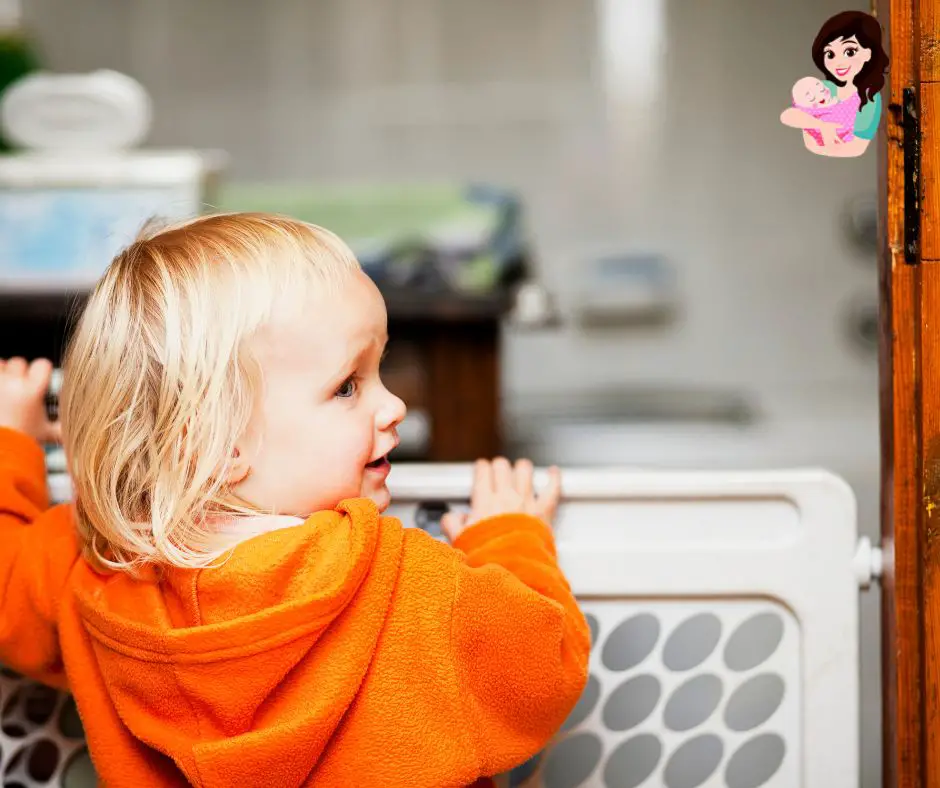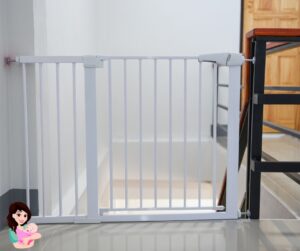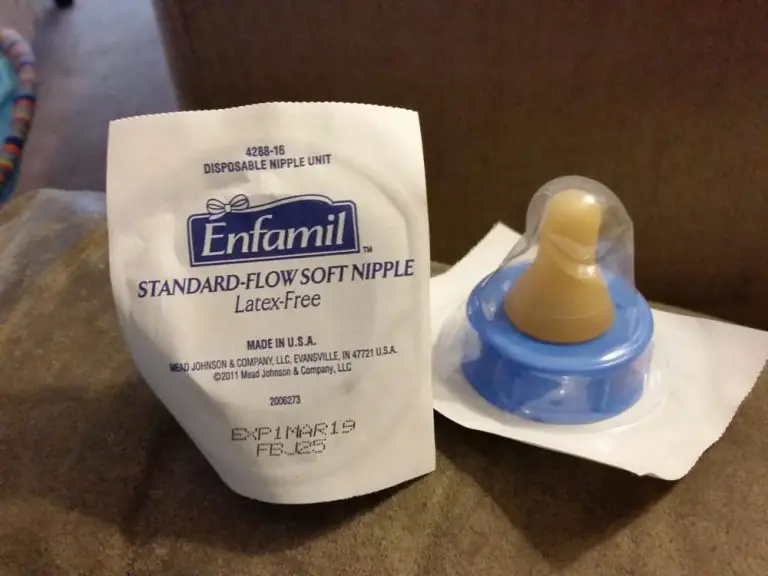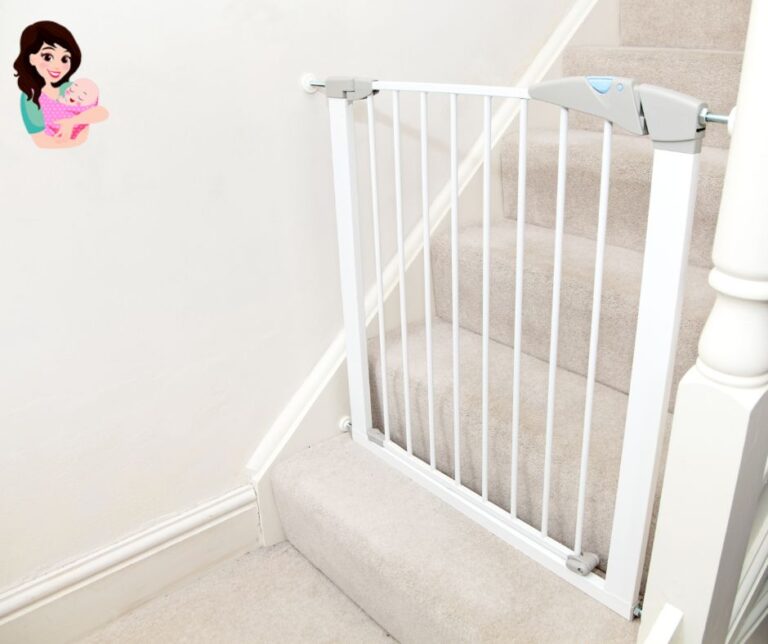
Pressure-mount baby gates are an essential piece of equipment for any home with young children. They can provide a safe and secure environment for your little ones while still allowing you to keep an eye on them. But many pressure-mount baby gates are not compatible with baseboard trim. This can be a huge problem, especially if you have a baseboard trim that you don’t want to remove or replace.
In this blog post, we will discuss how to properly install a pressure-mount baby gate on the baseboard trim so that your baby can remain safe and secure. We will go over what materials you need and the steps you need to follow for a successful installation. With the right information, you can easily install a pressure-mount baby gate on the baseboard trim in no time.
How To Pressure Mount Baby Gate On Baseboard Trim
When pressure mounting a baby gate on baseboard trim, it is important to take the necessary precautions to ensure the gate is secured properly.

Begin by measuring the doorway and purchasing a baby gate that fits the required measurements. Before beginning the installation, make sure the baseboards are clean and dry.
Next, position the gate in the doorway, making sure that the pressure indicator tabs are properly engaged and the rubber bumpers are in contact with the baseboards.
For added safety, use the included wall cups for extra stability and secure with screws. Once the gate is secure, test the pressure indicator tabs to ensure the gate is secure. With these steps, you can ensure your baby gate is properly pressure mounted on baseboard trim.
Challenges of Gates and Baseboards
Installing baby gates and baseboards can be a challenge for many parents. Ensuring a safe and secure environment for your child is paramount while taking into consideration the restrictions of your space. The most secure baby gate is one that is no more than 1 to 2 inches off the floor, while most baseboards are at least 3 inches high.
To combat this problem, baby gate adapters are available that attach to the wall above the baseboard and provide a lower mounting surface. This allows parents to install their gates safely and securely, while still ensuring the safety of their children. With the right tools and installation, parents can create a safe and secure environment for their children.
What are the Types of Babies Gates
Baby gates are an essential tool for keeping children safe in the home. There are several types of baby gates available to suit different needs. The most common type is pressure-mounted gates, which are simple, lightweight, and easy to install. They require no hardware and can be moved from room to room as needed.
Hardware-mounted gates are more secure, as they are mounted into the wall or door frame and cannot be knocked down. Retractable gates are another popular option, as they can be opened and closed quickly and easily. Finally, wooden gates are more aesthetically pleasing, but still provide the same level of security. All types of baby gates should be inspected regularly to ensure they are still secure and functioning properly.
Can You Screw Baby Gate Into Baseboard?
Baseboards are an important part of the home and should be handled with care. Therefore, it is not recommended to screw baby gates into baseboards. Doing so can cause damage to the baseboard, which can be expensive to repair. Additionally, the baby gate may not remain securely attached, which can lead to safety issues. Rather than screwing the gate into the baseboard, it is best to find alternative methods of installation such as using pressure-mounted gates or adjustable wall clamps. Doing so will help ensure the baby gate is secure without damaging the baseboard.
What Is the Difference Between Hardware and Pressure-Mounted Gates
Hardware-mounted gates are designed to be permanently affixed to walls and doorways, while pressure-mounted gates are designed to be temporarily attached to walls and doorways. Hardware-mounted gates are the most secure option and are generally used to keep children and pets away from areas of the home that may contain hazards.
Pressure-mounted gates are less secure but are often the preferred option when mounting a gate temporarily, such as when the gate needs to be moved from room to room. Pressure-mounted gates are also great for setting up a play area in an open space without the need for permanent installation. When mounting a gate, it is important to ensure that the product is properly installed and meets safety standards.
What Can I Use Instead of A Baby Gate?
Parents who are looking for alternatives to baby gates have a variety of options to choose from. Firstly, door knob covers and door locks can be used to ensure that little ones can’t access rooms or areas of the house that are off-limits. Additionally, using furniture such as bookcases and sofas to block off areas can be a great way to limit a child’s access to certain areas. For stairways, pressure-mounted gates are an option that can ensure the safety of children without the need for wall installation.
However, in creating a safe environment for young children, a baby gate can be a great asset. So, there are a variety of alternatives to baby gates that can be just as effective. For example, pool noodles can be used to create a soft barrier that is difficult for a child to climb over. PVC pipe and old crib railings can be repurposed to create a stable gate that is difficult to open.
Tall plant stands, cabinets, tension rods, and curtain rods can also be used to create a secure barrier. If you are feeling more ambitious, you can even create your own gate using wooden dowels. Finally, if you are looking for a more professional look, there are “baby window gates” that can be installed to keep children away from windows.
At What Age Do You Stop Using Baby Gates?
If you ask, At what age do you stop using baby gates? As a general rule of thumb, baby gates should be used until the child is between two and three years old, or until they can reliably demonstrate that they understand and can respect the safety rules associated with the gate.
It is important to begin teaching the safety rules associated with the gate as soon as possible, even if the child is too young to remember them. Furthermore, gates should be removed once the child is able to climb over them or open them. It is important to remember that age is not the only factor in determining when to stop using baby gates; it is also important to assess the child’s understanding of the safety rules associated with the gate.
Finally
In conclusion, pressure mounting a baby gate on baseboard trim can be a great way to secure your baby’s safety. It is important to take the necessary precautions such as measuring the doorway and purchasing a gate that fits. Additionally, it is important to ensure the gate is securely mounted and stable before leaving the area. With the right preparation and care, you can pressure mount a baby gate on baseboard trim safely and effectively.

Hi, This is Emma Baster; As a mom, I spend my free time caring for my kids. I’ve read a lot on the Internet to improve my childcare skill and bring the best to my kids. Eruditemommy shares my knowledge and experience through helpful posts. I hope you enjoy them!







